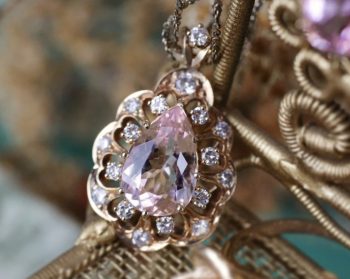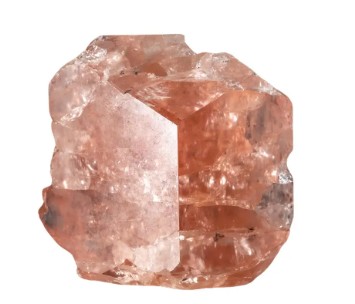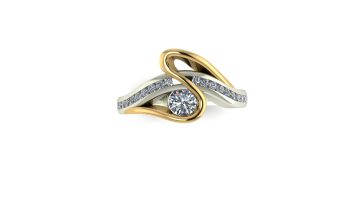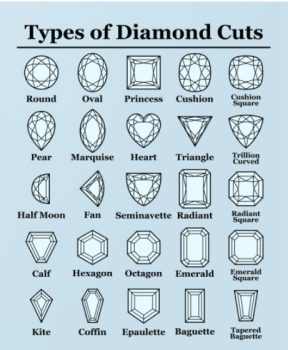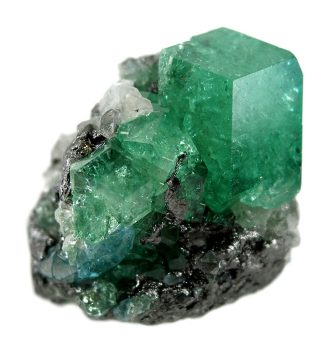Morganite has become on of those stones that people looking for a diamond alternative have been flocking to recently. Morganite has a stunning beauty and delicious pink tones that works very well for those looking for an engagement ring with a colored gemstone. On top of being a wonderful stone to use in jewelry, it is one of the more affordable gemstones. It definitely costs less than sapphire, ruby, or emerald. In this post, we will discuss everything about Morganite Gemstones. We will delve into morganite’s history, physical characteristics, and meaning as well as how to get the best stone for your money.
What Is Morganite?
Morganite is a beautiful gemstone that belongs to the beryl family, which also includes emerald and aquamarine. It is known for its delicate pink to peachy color, which is caused by the presence of manganese in its crystal structure. This gemstone was named after the American banker and gem enthusiast J.P. Morgan, who played a significant role in promoting and popularizing it in the early 20th century. Needless to say, it is a new gemstone.
Morganite is valued for its exceptional clarity and brilliance. It has a hardness of 7.5 to 8 on the Mohs scale. This makes it a durable gemstone suitable for everyday wear. Its color can range from pale pink to a deeper peachy hue, with some rare specimens displaying a vibrant salmon color. The gemstone is often faceted to enhance its natural beauty and maximize its sparkle.
In addition to its aesthetic appeal, morganite is believed to have metaphysical properties that promote love, compassion, and emotional healing. It is said to open the heart chakra and inspire feelings of joy, peace, and harmony. Many people choose morganite as an engagement ring stone or as a symbol of love and affection. Whether you are drawn to its stunning color or its spiritual significance, morganite is a gemstone that continues to captivate and enchant jewelry lovers around the world.
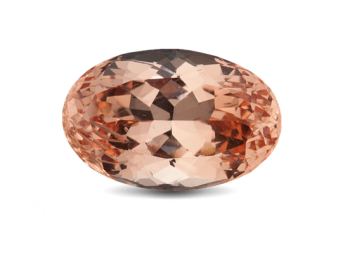
Where Is Morganite Mined?
Morganite is primarily mined in several countries around the world. One of the largest producers of morganite is Brazil, particularly in the state of Minas Gerais. The gemstone is also found in other countries such as Afghanistan, Madagascar, Mozambique, and Namibia. These regions have rich deposits of beryl, the mineral from which morganite is derived. Mining operations in these countries have been instrumental in meeting the global demand for this exquisite gemstone. So, whether you’re looking for a morganite engagement ring or simply appreciate its delicate beauty, you can trace its origins to these mining locations.

The History Of Morganite Gemstones
Morganite gemstones have a rich and fascinating history. Named after the famous financier J.P. Morgan, who was an avid gemstone collector, Morganite was first discovered in Madagascar in the early 20th century. This beautiful gemstone belongs to the beryl family, which also includes emerald and aquamarine. Morganite is known for its delicate pink to peach colors, which are caused by traces of manganese in its crystal structure.
In addition to its stunning appearance, Morganite has gained popularity due to its metaphysical properties. It is believed to be a stone of love and compassion, promoting harmony and emotional healing. Many people also use Morganite for its calming and soothing effects, as it is said to reduce stress and anxiety. It is often used in meditation practices to enhance spiritual growth and connection.
Today, Morganite is highly sought after by collectors and jewelry enthusiasts alike. Its unique color and brilliance make it a popular choice for engagement rings and other fine jewelry pieces. Whether you are drawn to its beauty or its metaphysical properties, Morganite is a gemstone that continues to captivate and inspire.
What Does Morganite Symbolize
Morganite is a gemstone that symbolizes love, compassion, and emotional healing. It is a variety of beryl, which also includes well-known gemstones like emerald and aquamarine. The soft pink color of morganite is often associated with femininity and tenderness. It is believed to promote harmony and peace in relationships, making it a popular choice for engagement rings and other romantic jewelry. In addition, morganite is said to have a calming effect on the emotions, helping to reduce stress and anxiety. Its gentle energy is thought to encourage self-love and acceptance, making it a valuable tool for personal growth and healing.
The symbolism of morganite goes beyond its physical properties. Many people believe that wearing or carrying morganite can enhance one’s ability to express love and kindness towards others. It is thought to open the heart chakra, allowing for a deeper connection with oneself and others. This gemstone is often associated with compassion and empathy, and is believed to help heal emotional wounds and past traumas. It is also said to promote forgiveness and understanding, allowing for the release of negative emotions and the cultivation of positive relationships.
Basically, morganite is a gemstone that symbolizes love, compassion, and emotional healing. Its soft pink color and gentle energy make it a popular choice for romantic jewelry, while its metaphysical properties are believed to promote harmony, self-love, and emotional well-being. Whether you are looking for a meaningful gift or seeking to enhance your own personal growth, morganite can serve as a powerful symbol of love and healing.

Physical Characteristics of Morganite Gemstones
Morganite gemstones are known for their beautiful pink color, which ranges from pale pink to a deeper rose hue. This gemstone belongs to the beryl family, along with other well-known gemstones such as emerald and aquamarine. One of the key physical characteristics of morganite is its hardness, which ranges from 7.5 to 8 on the Mohs scale. This makes it a durable gemstone that can withstand everyday wear.
In terms of chemical composition, morganite is composed of beryllium, aluminum, silicon, and oxygen. The presence of trace elements such as manganese gives morganite its distinctive pink color. It is important to note that morganite can sometimes exhibit pleochroism, which means that it can display different colors when viewed from different angles. This adds to the unique beauty of this gemstone.
When it comes to clarity, morganite gemstones can vary. Some stones may have visible inclusions, while others can be relatively clean. The presence of inclusions does not necessarily detract from the beauty of morganite, as they can add character and uniqueness to the gemstone. However, gemstones with fewer inclusions are generally considered more valuable.
In conclusion, morganite gemstones are prized for their stunning pink color, durability, and unique characteristics. Whether you are looking for a piece of jewelry or simply appreciate the beauty of gemstones, morganite is definitely worth considering. Its physical and chemical properties make it a fascinating gemstone that is sure to captivate anyone who sets eyes on it.
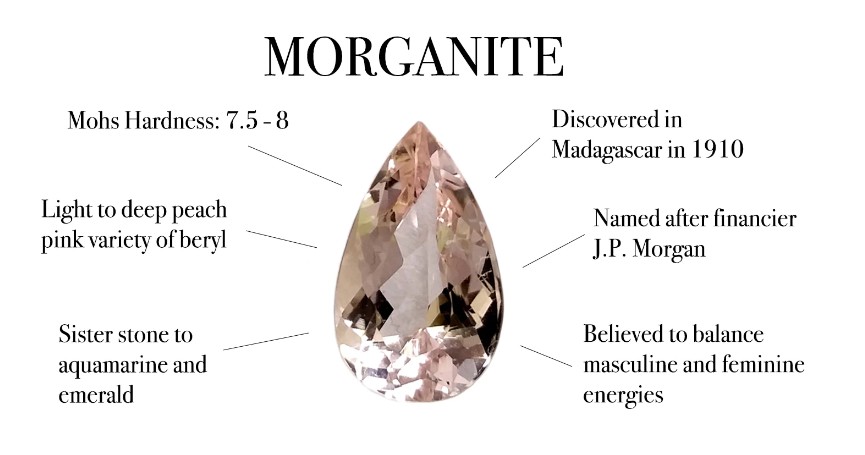
Morganite Color Range & Treatments
Morganite is a gemstone that belongs to the beryl family, which also includes emerald and aquamarine. It is known for its beautiful pink to peach color range. The color of morganite can vary from pale pink to a deeper peachy hue. The gemstone gets its color from traces of manganese in its crystal structure. The most desirable morganite stones have a vibrant and intense pink color. However, lighter shades of pink are also highly valued for their delicate and feminine appearance. Overall, the color range of morganite offers a variety of options for those who appreciate its soft and romantic hues.
Morganite is often treated to enhance its appearance. One common treatment is heat treatment, which can deepen the color and remove any unwanted yellow or brown tones. Most of the gems you will find for sale have been heat treated. Another treatment is irradiation, which can intensify the pink hue. While both of these treatments are widely accepted and do not affect the durability or value of the gemstone, irradiated stones should cost less. However, it is important for consumers to be aware of these treatments when purchasing morganite jewelry to ensure they are making an informed decision.
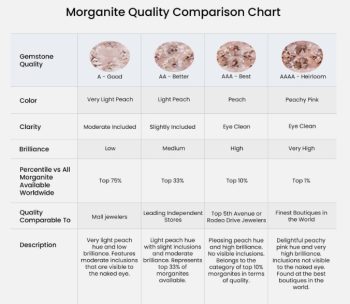
Lab Created vs Natural Morganite
Lab created morganite is a type of gemstone that is grown in a laboratory using advanced technology. It has the same chemical composition and physical properties as natural morganite, but it is created in a controlled environment. Lab created morganite is often more affordable than natural morganite, making it a popular choice for those who want the beauty of the gemstone without the high price tag.
Natural morganite, on the other hand, is formed in nature over millions of years. It is a rare and precious gemstone that is prized for its delicate pink hue. Natural morganite is often more expensive than lab created morganite due to its rarity and the time it takes to form naturally.
Both lab created and natural morganite have their own unique qualities and appeal. Lab created Morganite Gemstones offers a more affordable option without compromising on the beauty and durability of the gemstone. Natural morganite, on the other hand, has a certain allure and value that comes from its natural formation.
Ultimately, the choice between lab created and natural Morganite Gemstones comes down to personal preference and budget. Whether you choose lab created or natural morganite, both options offer a stunning and elegant gemstone that can be enjoyed for years to come. Just make sure you are getting a natural stone if that is what you are paying for.
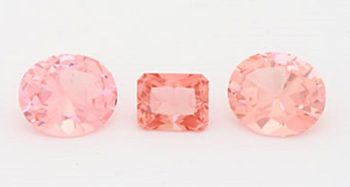
How To Tell The Difference Between Natural And Lab Created Morganite
Morganite Gemstones come in various shades of pink. However, it can be challenging to determine whether a piece of morganite is natural or lab-created. Here are some key factors to consider when trying to tell the difference.
Firstly, examine the color of the morganite. Natural morganite typically has a softer, more subtle hue, while lab-created morganite tends to have a more vibrant and intense color. This is because lab-created morganite is made using advanced technology that allows for precise control over the coloration process.
Secondly, look at the clarity of the gemstone. Natural morganite often contains inclusions, which are small imperfections within the stone. These inclusions can give the gemstone a unique character and add to its beauty. On the other hand, lab-created morganite is usually flawless and free from any visible inclusions.
Lastly, consider the price. Natural morganite is generally more expensive than lab-created morganite due to its rarity and the time it takes to form naturally. Lab-created morganite, on the other hand, is more affordable and readily available.
In conclusion, when trying to differentiate between natural and lab-created morganite, consider factors such as color, clarity, and price. By examining these aspects, you can make an informed decision and choose the morganite that best suits your preferences and budget.
The Bottom Line On Morganite Gemstones
Morganite is a gemstone that has gained popularity in recent years. It is a variety of beryl, which also includes emerald and aquamarine. The color of morganite can range from pale pink to peach to a deeper rose hue. This gemstone is known for its clarity and brilliance, making it a desirable choice for rings, pendants, and earrings.
One of the key factors that make morganite appealing is its affordability. Compared to other gemstones like diamonds or rubies, morganite is more budget-friendly while still offering a beautiful and elegant look. This makes it a great option for those who want a stunning piece of jewelry without breaking the bank.
In addition to its affordability, morganite also has a unique charm. Its soft, pastel hues give it a feminine and romantic touch, making it a popular choice for engagement rings and other special occasions. The delicate color of morganite complements various skin tones and can be easily paired with different metals and other stones.
